Genome-wide analysis of the complex transcriptional networks of rice developing seeds
- PMID: 22363552
- PMCID: PMC3281924
- DOI: 10.1371/journal.pone.0031081
Genome-wide analysis of the complex transcriptional networks of rice developing seeds
Abstract
Background: The development of rice (Oryza sativa) seed is closely associated with assimilates storage and plant yield, and is fine controlled by complex regulatory networks. Exhaustive transcriptome analysis of developing rice embryo and endosperm will help to characterize the genes possibly involved in the regulation of seed development and provide clues of yield and quality improvement.
Principal findings: Our analysis showed that genes involved in metabolism regulation, hormone response and cellular organization processes are predominantly expressed during rice development. Interestingly, 191 transcription factor (TF)-encoding genes are predominantly expressed in seed and 59 TFs are regulated during seed development, some of which are homologs of seed-specific TFs or regulators of Arabidopsis seed development. Gene co-expression network analysis showed these TFs associated with multiple cellular and metabolism pathways, indicating a complex regulation of rice seed development. Further, by employing a cold-resistant cultivar Hanfeng (HF), genome-wide analyses of seed transcriptome at normal and low temperature reveal that rice seed is sensitive to low temperature at early stage and many genes associated with seed development are down-regulated by low temperature, indicating that the delayed development of rice seed by low temperature is mainly caused by the inhibition of the development-related genes. The transcriptional response of seed and seedling to low temperature is different, and the differential expressions of genes in signaling and metabolism pathways may contribute to the chilling tolerance of HF during seed development.
Conclusions: These results provide informative clues and will significantly improve the understanding of rice seed development regulation and the mechanism of cold response in rice seed.
Conflict of interest statement
Figures

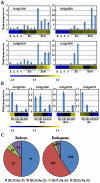


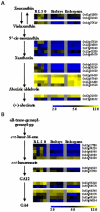
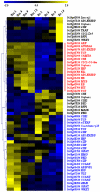
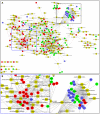

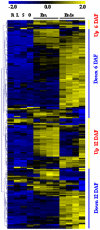

Similar articles
-
Global Analysis Reveals the Crucial Roles of DNA Methylation during Rice Seed Development.Plant Physiol. 2015 Aug;168(4):1417-32. doi: 10.1104/pp.15.00414. Epub 2015 Jul 5. Plant Physiol. 2015. PMID: 26145151 Free PMC article.
-
Disruption of the OsWRKY71 transcription factor gene results in early rice seed germination under normal and cold stress conditions.BMC Plant Biol. 2024 Nov 18;24(1):1090. doi: 10.1186/s12870-024-05808-9. BMC Plant Biol. 2024. PMID: 39551730 Free PMC article.
-
New insights into the complex and coordinated transcriptional regulation networks underlying rice seed development through cDNA chip-based analysis.Plant Mol Biol. 2005 Apr;57(6):785-804. doi: 10.1007/s11103-005-1803-4. Plant Mol Biol. 2005. PMID: 15952066
-
Molecular networks regulating Arabidopsis seed maturation, after-ripening, dormancy and germination.New Phytol. 2008;179(1):33-54. doi: 10.1111/j.1469-8137.2008.02437.x. Epub 2008 Apr 14. New Phytol. 2008. PMID: 18422904 Review.
-
Next-Generation Sequencing Sheds New Light on Small RNAs in Plant Reproductive Development.Curr Issues Mol Biol. 2018;27:143-170. doi: 10.21775/cimb.027.143. Epub 2017 Sep 8. Curr Issues Mol Biol. 2018. PMID: 28885180 Review.
Cited by
-
Next-generation sequencing-based mRNA and microRNA expression profiling analysis revealed pathways involved in the rapid growth of developing culms in Moso bamboo.BMC Plant Biol. 2013 Aug 21;13:119. doi: 10.1186/1471-2229-13-119. BMC Plant Biol. 2013. PMID: 23964682 Free PMC article.
-
Genome-wide analysis of coordinated transcript abundance during seed development in different Brassica rapa morphotypes.BMC Genomics. 2013 Dec 1;14(1):840. doi: 10.1186/1471-2164-14-840. BMC Genomics. 2013. PMID: 24289287 Free PMC article.
-
Rice aleurone layer specific OsNF-YB1 regulates grain filling and endosperm development by interacting with an ERF transcription factor.J Exp Bot. 2016 Dec;67(22):6399-6411. doi: 10.1093/jxb/erw409. Epub 2016 Nov 1. J Exp Bot. 2016. PMID: 27803124 Free PMC article.
-
Development of endosperm transfer cells in barley.Front Plant Sci. 2014 Mar 26;5:108. doi: 10.3389/fpls.2014.00108. eCollection 2014. Front Plant Sci. 2014. PMID: 24723929 Free PMC article. Review.
-
Spatiotemporal Dynamics of Oligofructan Metabolism and Suggested Functions in Developing Cereal Grains.Front Plant Sci. 2016 Jan 19;6:1245. doi: 10.3389/fpls.2015.01245. eCollection 2015. Front Plant Sci. 2016. PMID: 26834760 Free PMC article. Review.
References
-
- Itoh J, Nonomura K, Ikeda K, Yamaki S, Inukai Y, et al. Rice plant development: from zygote to spikelet. Plant Cell Physiol. 2005;46:23–47. - PubMed
-
- Sato Y, Tamaoki M, Murakami T, Yamamoto N, Kano-Murakami Y, et al. Abnormal cell divisions in leaf primordia caused by the expression of the rice homeobox gene OSH1 lead to altered morphology of leaves in transgenic tobacco. Mol Gen Genet. 1996;251:13–22. - PubMed
-
- Agarwal P, Kapoor S, Tyagi AK. Transcription factors regulating the progression of monocot and dicot seed development. Bioessays. 2011;33:189–202. - PubMed
-
- Kurata N, Miyoshi K, Nonomura K, Yamazaki Y, Ito Y. Rice mutants and genes related to organ development, morphogenesis and physiological traits. Plant Cell Physiol. 2005;46:48–62. - PubMed
Publication types
MeSH terms
Substances
LinkOut - more resources
Full Text Sources
Molecular Biology Databases
Research Materials
Miscellaneous

